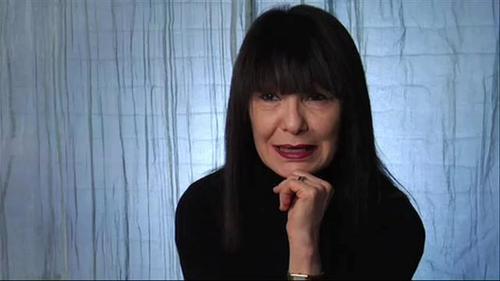The Business of Art: A Conversation with RoseLee Goldberg
RoseLee Goldberg is an art historian and the author of the seminal survey Performance Art: From Futurism to the Present, which remains an influential text on the history of performance art. She is also the founding director and curator of PERFORMA05, the first biennial of performance by visual artists, which will take place at various sites in New York City from November 3-21.
Including live performances, screenings, exhibitions, lectures, and symposia from the likes of Francis Alÿs, Marina Abramovic, Jack Smith, neuroTransmitter, Tony Conrad, and many other artists and collectives, PERFORMA05 may perform the dual function of appropriately acknowledging the history of performance in the context of visual art and curing the art world of biennial-itis.
NYFA Current Editor Nick Stillman recently met with RoseLee Goldberg at PERFORMA’s offices to discuss her hopes and intentions for PERFORMA05, which was a NYFA Fiscally Sponsored project in 2001 (for Shirin Neshat’s multimedia performance Logic of the Birds) until early 2005, when PERFORMA acquired its own 501©3 nonprofit status.
Nick Stillman: Given the current proliferation of “supershows”—biennials, triennials, and huge art fairs—how can PERFORMA05 stand apart from the crowd?
RoseLee Goldberg: A fair question, because I think we’re all feeling “biennial overload” these days. Nevertheless, I think it’s important that performance have a biennial of its own. The history of performance art is integral to the history of art. It has changed the shape and direction of art history over the last 100 years, and it’s time that its extensive influence is properly understood. Throughout art history, performance (think Futurism, Dada, Surrealism, early Rauschenberg, or Vito Acconci) has been the starting point for some of the most radical ideas that have changed the way we—artists and audiences—think about art. It is this history that is the inspiration for PERFORMA05.
NS: Performance is so often pegged as an accessory to visual art.
RG: Yes, it’s presented as a “sideshow” to the main event. Yet, contemporary art today is an extension of performance art history. Conceptual art of the ’70s largely consisted of performance or live actions, and the work we’re seeing today comes out of that trajectory. Whether we’re looking at Rirkrit Tiravanija, Pierre Huyghe, Tracy Emin, Maurizio Cattelan, or Patty Chang, contemporary art is influenced by and is an extension of that history. So, no, we don’t need more biennials, but we do need to take the history of performance seriously. A biennial provides a platform for close examination of this material. Curating a biennial on performance raises very different issues from a visual art biennial, because one is curating “experiences” and, most often, work that has not been seen before. Much of it will be seen for the first time at the biennial itself.
NS: PERFORMA is commissioning live works by Francis Alÿs and Jesper Just. As I’m unfamiliar with Just, I’m curious what is it about his work in particular that you think epitomizes the state of live art today and motivated you to commission this piece by him, which also features a vocal group called the Finnish Screaming Men’s Choir.
RG: Jesper is a young Danish artist working in video who has never done performance before. His work is beautifully crafted and he uses singers and songs to drive the emotional content (usually about male emotions) of his videos. There is an inherent theatricality about the work that cries out to be “live.” When I saw his work last year at Perry Rubenstein Gallery, I decided just a few minutes into watching the first video that I would commission him to do an opera. It turned out that several of the performers came from opera, and he loved my suggestion. Hence Jesper’s first “opera,” True Love is Yet to Come. There are other artists who create large-scale work that is visually stunning and that is focused on sound and time, and that I feel has the potential for being transformed into live performance. Shirin Neshat’s Logic of the Birds, which I produced four years ago—and was a fiscally sponsored NYFA project—came out of a similar situation; I approached Shirin and asked whether she would be interested in creating a performance, and I’m currently working with Isaac Julien on a new piece for PERFORMA07. I am looking for work that can take performance in a new direction. For me, it’s a bit like a writer saying “I wrote the book I always wanted to read.” I’m producing performances that I would like to see and write about.
NS: I want to shift gears slightly and talk about Marina Abramovic’s re-staging of several seminal performances from the history of performance art at the Guggenheim. I have no doubt that hers is a gesture of reverence, but what I want to ask is whether it runs the risk of tampering with the legacy of these performances, specifically in the case of Joseph Beuys and Gina Pane, who are no longer alive. Is this a risky proposition?
RG: I think it’s risky, but Marina wouldn’t do otherwise. As an artist who has created an entire oeuvre of performance over a more than three decade-long career, she is examining performance history very closely and asking all the big questions that she must; about curating, conserving, and reviewing that history. At first, she looked at her own work in this way, and in the early ’90s created Biography, a live retrospective of her work. This actually entailed a live performance of her own history, in which she re-enacted a selection of performances from throughout her career. WithSeven Easy Pieces at the Guggenheim, she is applying these same questions to the work of other artists. This is a very important step, and it will become a touchstone for ongoing discussions about how museums cope with questions of collecting and conserving performances of these seminal artists from the ’70s and of the work of a lot of artists working today. Joan Jonas, Meredith Monk, Carolee Schneemann, and Robert Morrris have all devised ways in recent years to re-construct or re-present their earlier work in the historical context of museum exhibitions. For curators, this has become more and more of an issue; the ’70s have become history and the subject of numerous thoughtful exhibitions. We need specialist performance curators to develop solutions to the many questions raised by ephemeral work.
NS: I saw William Pope.L performing an installment of The Great White Way—his Broadway Crawl—in 2003. He was decked out in his Superman costume with a skateboard strapped to his back, crawling like he does—really painfully and slowly. He was also surrounded by a production crew filming him close up; part of the performance in a way, I guess. But I couldn’t help but think that this entourage diluted the performance’s effect on spectators. I suspect it actually had no visceral psychological effect on spectators because the camera made it safe to laugh, it made it obvious that it was “art.” When is performance best left undocumented?
RG: With some performances you wish they would leave well alone and allow the viewer to experience the piece directly, without hovering cameras in the way. But the contemporary artist thinks carefully about documentation—as Beuys and Yves Klein did—and the power of those after-images to tell a story. Viewing documentation of a performance is of course a different experience than actually being there, but in truth, few people were ever there. That doesn’t lessen the iconic significance of the image, or the impact of the ideas behind it. History is essentially about not being there and the argument that you have to be there for performance is an excuse, and an ignorant one. Most art lovers know their art history through reproductions, and get to see only a fraction of images from that history in real life if they’re fortunate enough to travel to museums far and wide. It’s a similar situation with the events that make up the history of performance.
NS: You wrote in Performance Art that by 1979, the anti-establishment ideals characterizing ’60s and ’70s performance had been replaced in the late ’70s and early ’80s by a generation focusing on pop culture critiques of some type. Are there generalizations to be made about contemporary performance currents or is the field just too broad?
RG: There are generalizations and there are also tendencies driven by shifts in the economic, political, and cultural mood of a particular timeframe that can be seen in performance. I think of performance as a highly reflexive medium that responds to such changes. The ’60s and ’70s were utterly radical across all fronts—a period of ongoing social, political, racial, and sexual revolutions—and conceptual art and performance were utterly radical as well. We are living in a very materialistic time, without a doubt we are a “society of the spectacle.” Contemporary art operates at an extraordinarily sophisticated level. Think of the quality of execution of an exhibition by Matthew Barney, for example. His work is visionary and utterly fabulous—and such extraordinary quality can only be achieved through multimillion dollar backing. So we’re looking at contemporary art and performance and wondering what it is that the newest material says about the aesthetics of our own era. The Futurists, in 1909 looked to the machine, the racing car, train, and the airplane as the ultimate driving forces in their evolving aesthetic. What is the equivalent for the young artist in 2005? We’re looking at a computerized aesthetic that makes everything absolutely beautiful and corrects images to be that way even if they weren’t to start with. We’re looking at gorgeous, tiny instruments, like the iPod, and we actually expect artwork to have a similar level of perfection and invention. PERFORMA05 is looking at these emerging tendencies and showing a range of different approaches.
NS: How, if at all, do you feel current performances are reflecting or creating dialogue around the American government’s moral conservatism, fiscal irresponsibility, and fierce management of public image? American performers in the ’70s and ’80s emerged in a similarly conservative political climate. Are strong political commitments and statements reflected consistently in current performance and will they appear in PERFORMA05?
RG: I wish it were otherwise, but there’s not a very strong response to the current political mess in this biennial. This might have as much to do with the sociology of the New York art world at the moment as anything else. By that I mean that the scene is fragmented; in the ’70s and ’80s there was a community— or several communities—of artists, and people acted in chorus about the Vietnam war in the late ’60s, feminism in the ’70s, and the AIDS crisis in the ’80s. It’s very hard to be a solo voice in this regard. There are a few politically savvy pieces in PERFORMA05; Coco Fusco’s A Room of One’s Own is a lecture-performance on a (real) training camp for interrogators. Carey Young’s Consideration deals with the overwhelming power of the law; viewers will be fingerprinted on entering the gallery (something most foreigners must do on entering the US), and Sislej Xhafa also makes reference to lawyers and the law in this country. But the war in Iraq has no presence as of this moment.
NS: You’ve talked about how important the history of the ’60s and ’70s is on the current generation of performers. It seems to me that an important motivating factor behind ’70s performance in particular was the dematerialization the art object and resisting the commodification of objects by gallerists and collectors. Given the current art world bubble and inflated prices art objects continue to fetch, does this continue to be a motivation for performers?
RG: I think that the entrenched art market provides every reason for artists to make performances again. It’s an antidote to the market for younger artists, and it’s a relief for those inside the market, to make performances that have nothing to do with success in the marketplace and everything to do with the world of ideas. Historically, performance has always been a way for a new generation to break with the old, and I think we’ll be seeing a lot more performance over the next five years, exactly for this reason. Performance is a much more aggressive way to get work out there in the world. It remains radical because it is live and demands attention.
For more information on PERFORMA05, visit www.performa-arts.org/.





